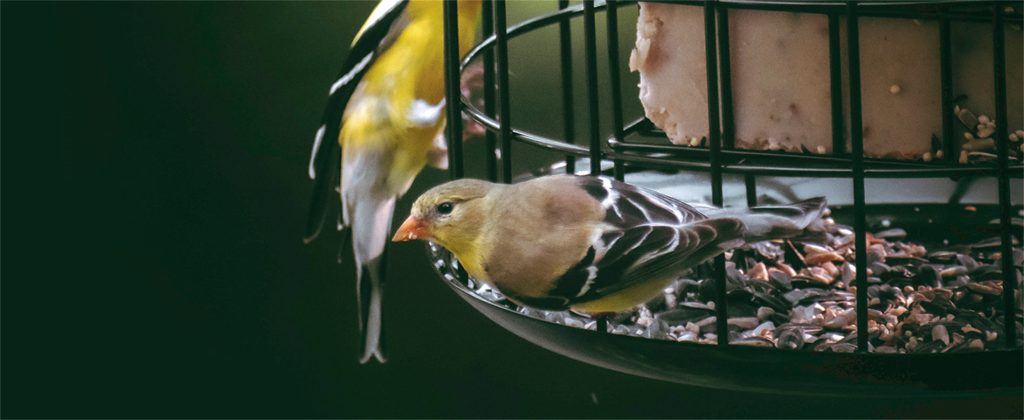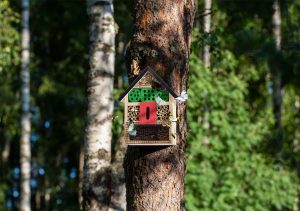What is the Largest Species of Hummingbird in the World?
Hello, fellow bird lovers! You know how we all adore those tiny, colorful hummingbirds that flutter around like little fairies. But guess what? There’s one hummingbird that breaks all the rules – the Giant Hummingbird! So, let’s explore the world of the largest hummingbird species and learn why it’s such a big deal.

We all know that the Giant Hummingbird (Patagona gigas) is currently the largest hummingbird in the world. It is found in the Andes Mountains of South America, from Colombia to Argentina.
It is a large and powerful hummingbird species, with a wingspan of up to 10 inches. The male is black with a green throat and a white belly. The female is slightly browner with a white throat.
Meet the Giant Hummingbird
Now for the start of the show-the Giant Hummingbird! Scientists call it “Patagona Gigas,” but you can just call it the Giant. It lives in places like the Andes in South America, showing off its cool high-altitude adaptability.
Size
The Giant Hummingbird is about 9.1 inches long and weighs 18-24 grams. Unlike its smaller buddies, this bird is like the Dwayne “The Rock” Johnson of hummingbirds. It has a long, straight bill that is longer than its head. Its wings are long and narrow, and its tail is long and forked. The male has a dark green throat and a white belly.
Habitat and Range
The Giant Hummingbird is commonly found in the Andes of South America, from Colombia to Argentina. It prefers open, dry habitats, such as scrubland and grasslands. It can also be found in forests and gardens. You can try to attract these little fairies through bird feeders.

Diet and Feeding Habits
Now, let’s talk about their diet. Just like us, the Giant Hummingbird has to eat, right? Well, it’s into the classic hummingbird drink-nectar from flowers. But here’s the twist: It’s also a bug eater! It loves to eat both insects and spiders.
To attract hummingbirds to your bird feeder, you can provide them with a nectar solution that mimics the natural nectar they feed on.
Breeding Behavior and Nesting Habits
The Giant Hummingbird breeds in the spring and summer. The female Giant Hummingbird builds a nest in a tree or bush. They build the nest with soft materials, such as leaves, moss, and feathers. The female lays two eggs that hatch in about 15 days.
Love Story and Nesting
When it comes time to find a mate, the Giant Hummingbird doesn’t hold back. It shows off with fancy flying moves that could rival a superhero’s aerial battle. Once it’s found a mate, they build cozy nests hidden in trees or bushes. The lady does most of the babysitting duties.

Threats and Conservation
The Giant Hummingbird is listed as Near Threatened by the IUCN Red List. The main threats to the species are habitat loss and climate change. The expansion of agriculture and deforestation are the main causes of habitat loss. Climate change is causing the Andes Mountains to warm, which is affecting the availability of food and nesting sites for the Giant Hummingbird.
Conservation Efforts
There are a number of conservation efforts underway to protect the Giant Hummingbird. These efforts include:
- Protecting the hummingbird’s habitat
- Creating protected areas for the hummingbird
- Raising awareness of the hummingbird’s plight
You can help to protect the giant hummingbird by:
- Learning more about the hummingbird and its threats
- Supporting conservation organizations that are working to protect the hummingbird
- Providing multiple bird feeders or bird houses in garden
Heroes for Hummingbirds
But don’t worry! There are heroes out there working to save our feathered friend. Smart people are studying these birds to figure out how to protect them and their homes.

Final Thoughts
So, there you have it, folks! The Giant Hummingbird is a true wonder in the world of birds. From its larger size to its unique habits, it’s a reminder that nature is full of surprises. Let’s make sure we’re good friends with our feathered neighbors, big and small. After all, every bird has a special role to play on our amazing planet!













Post Comment